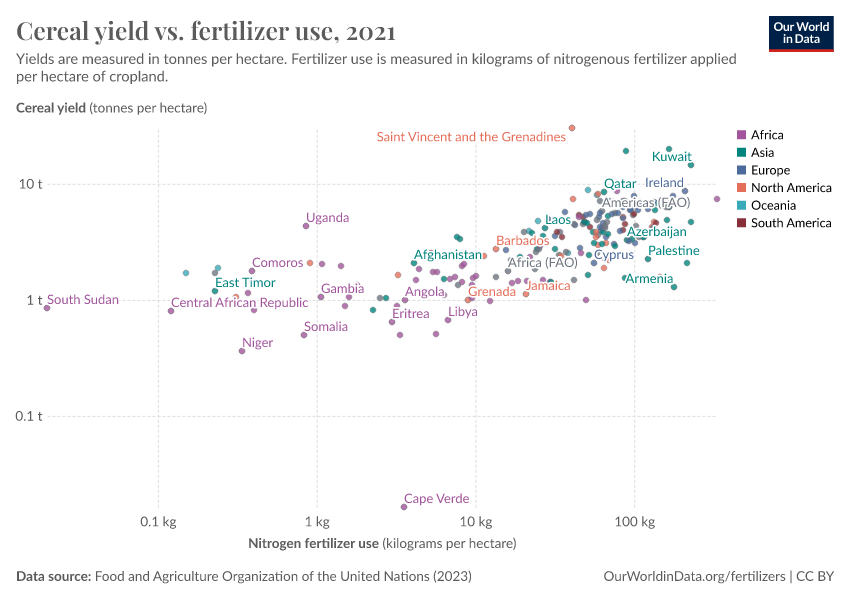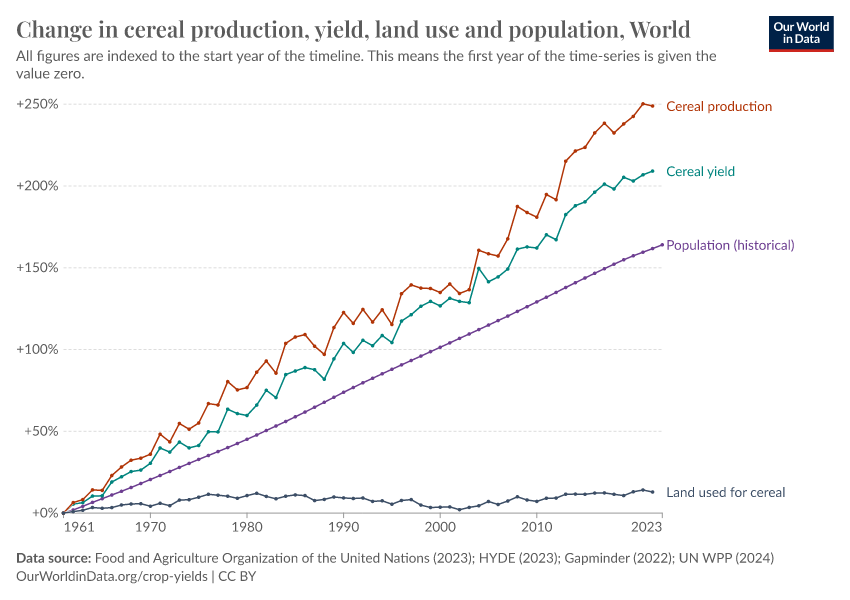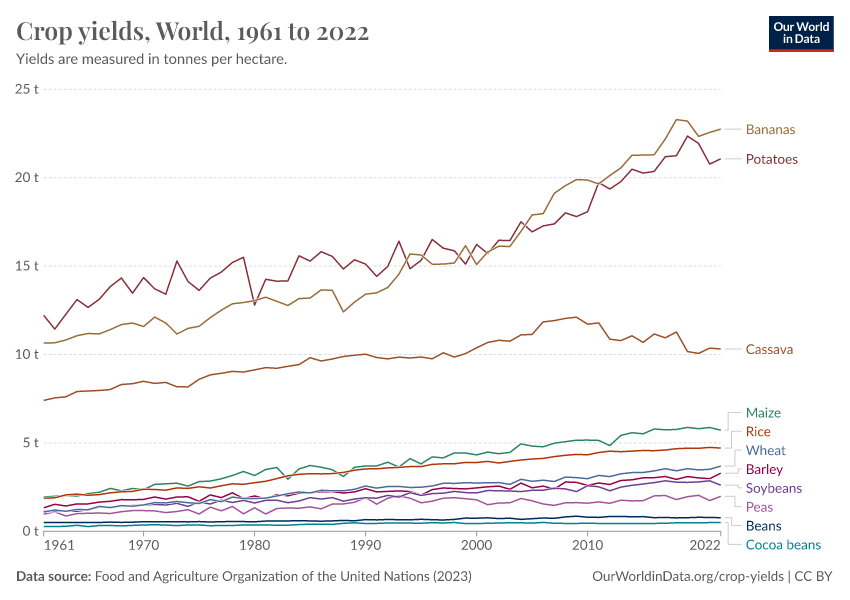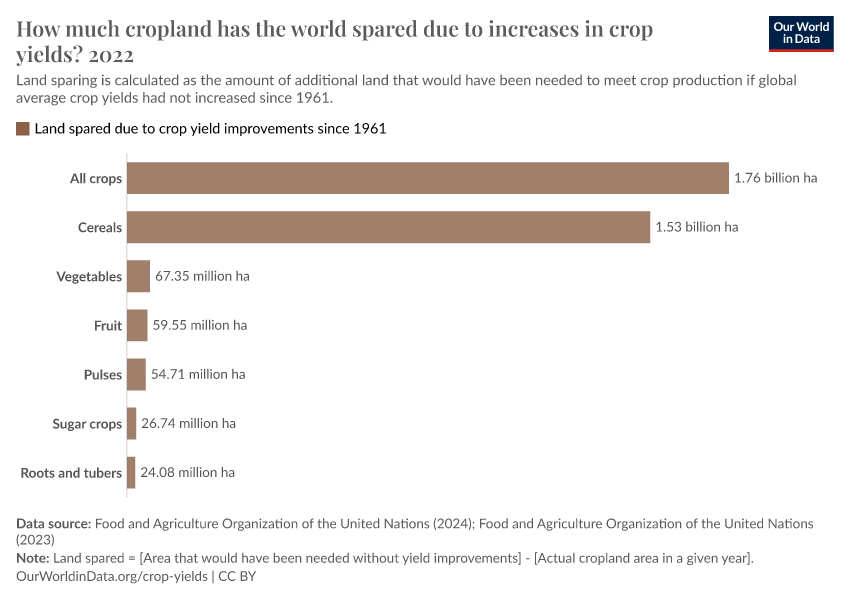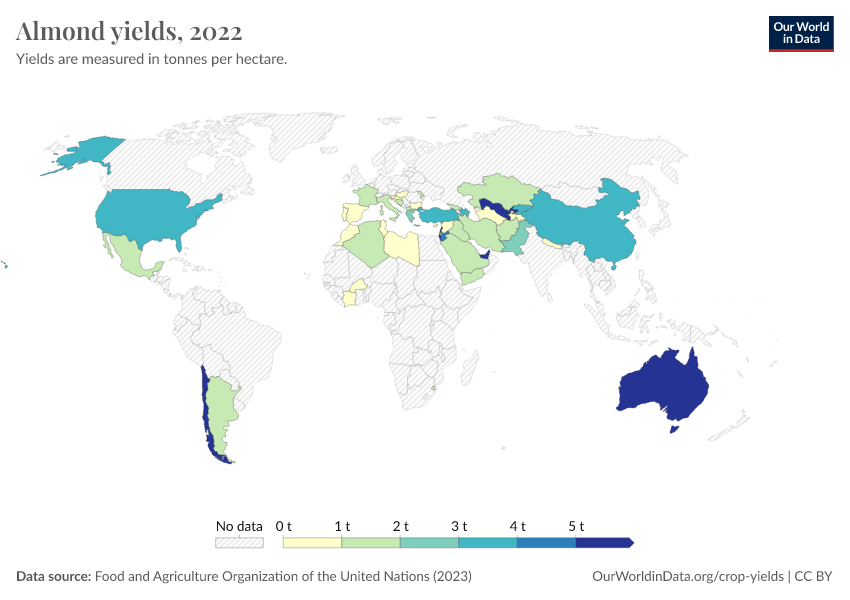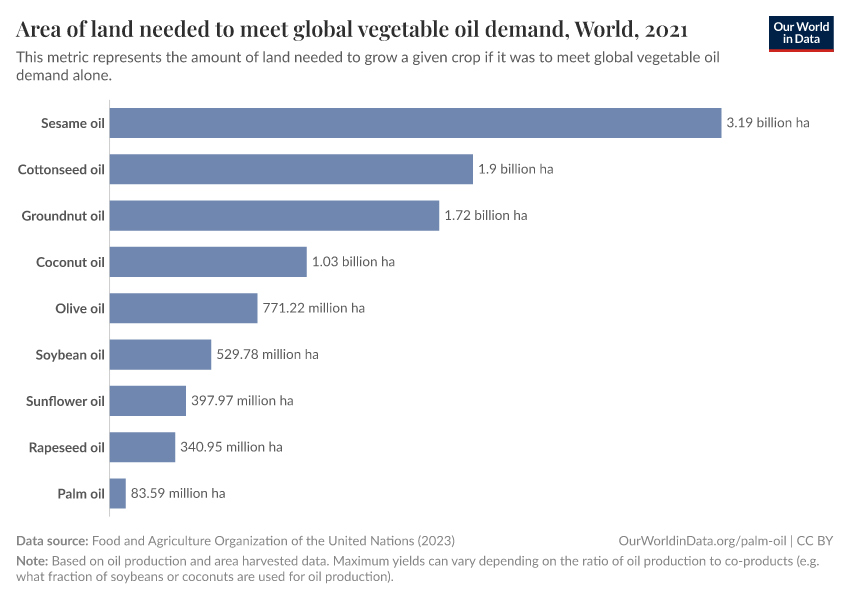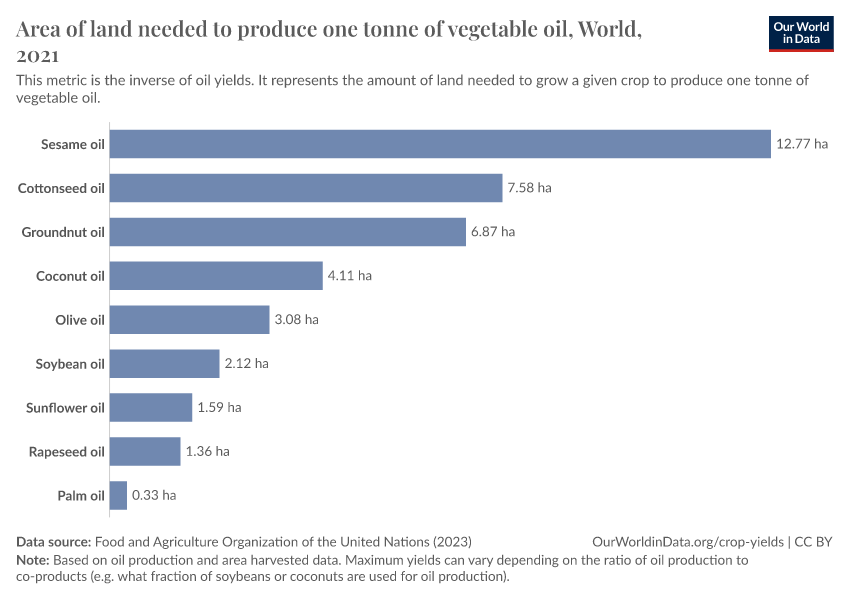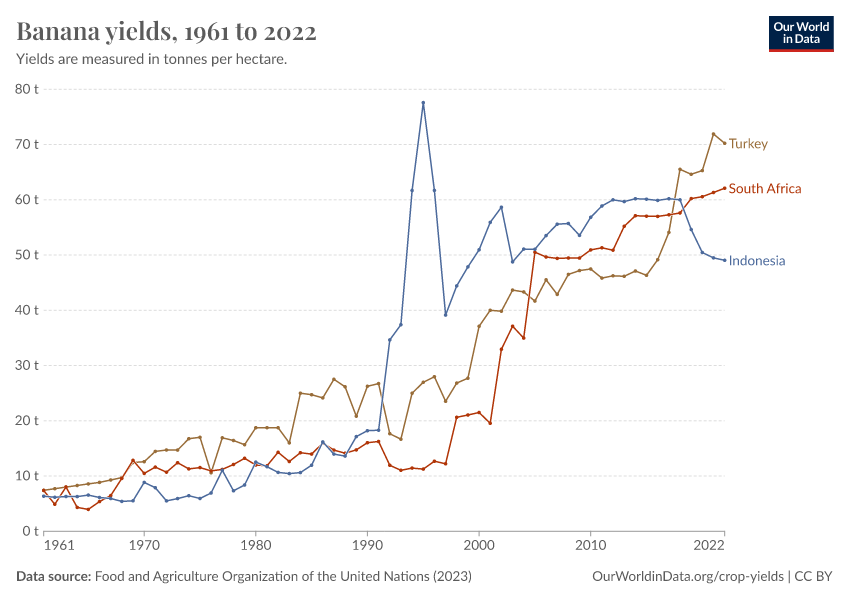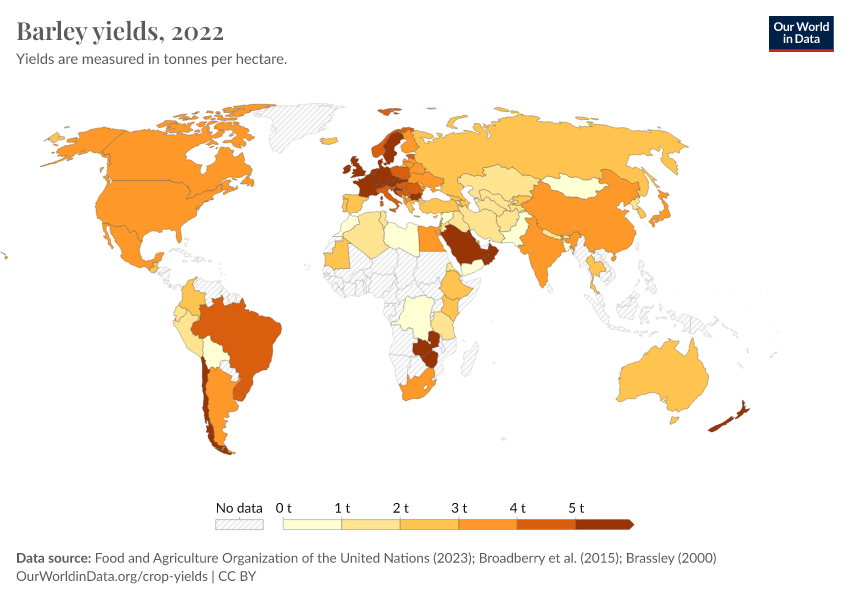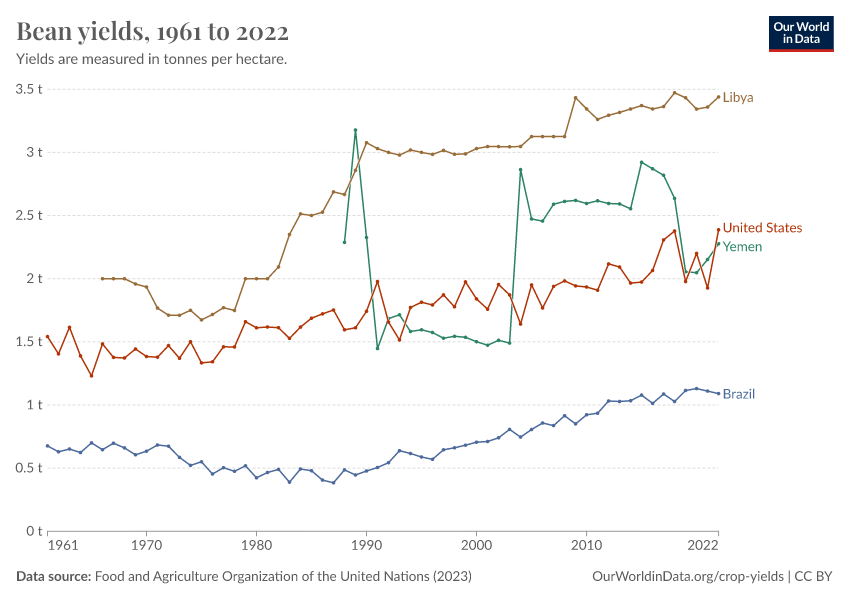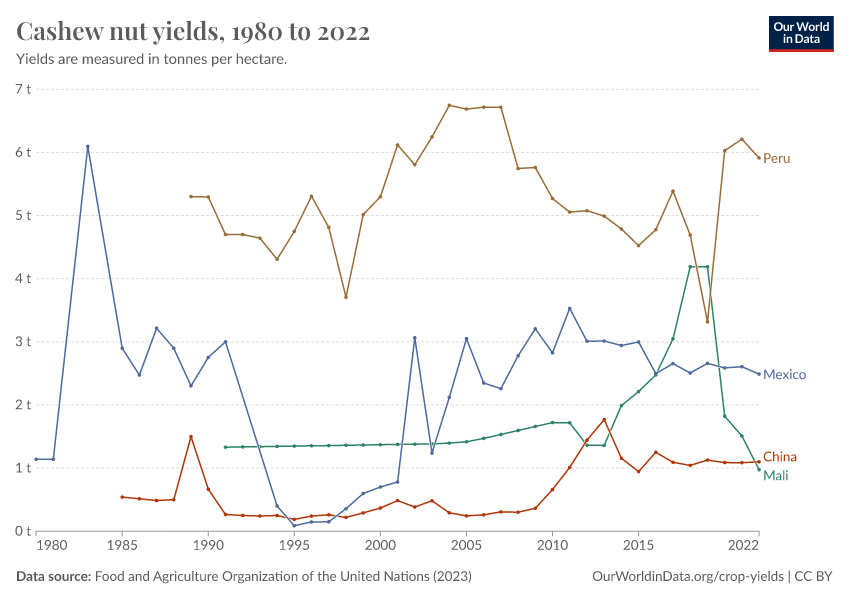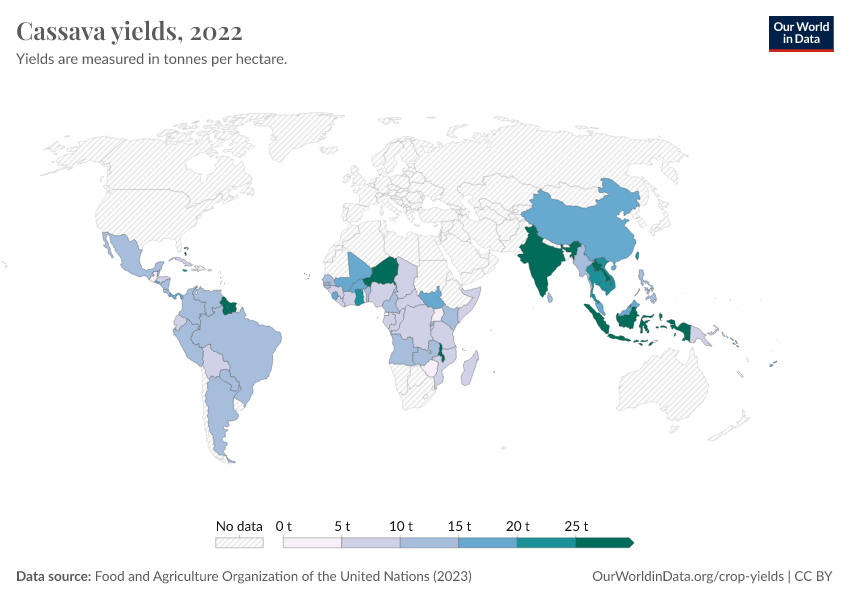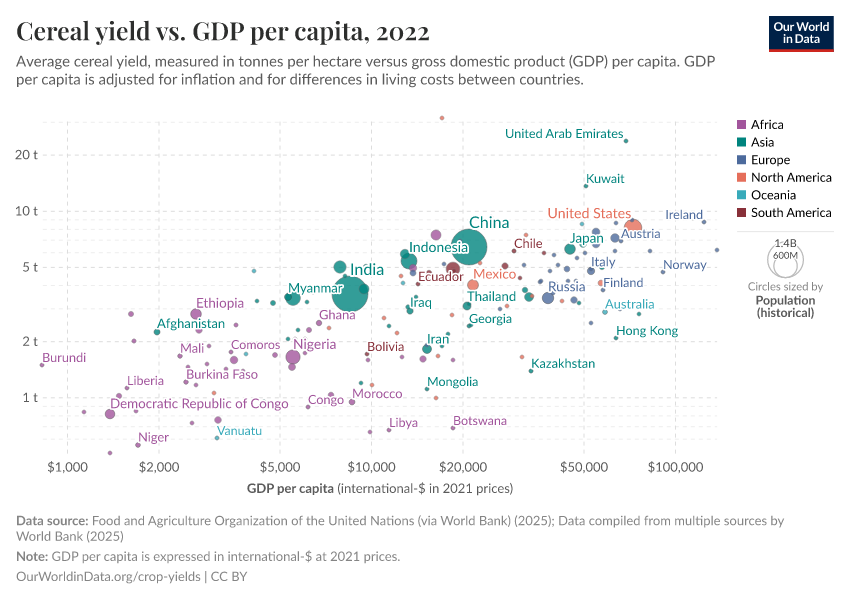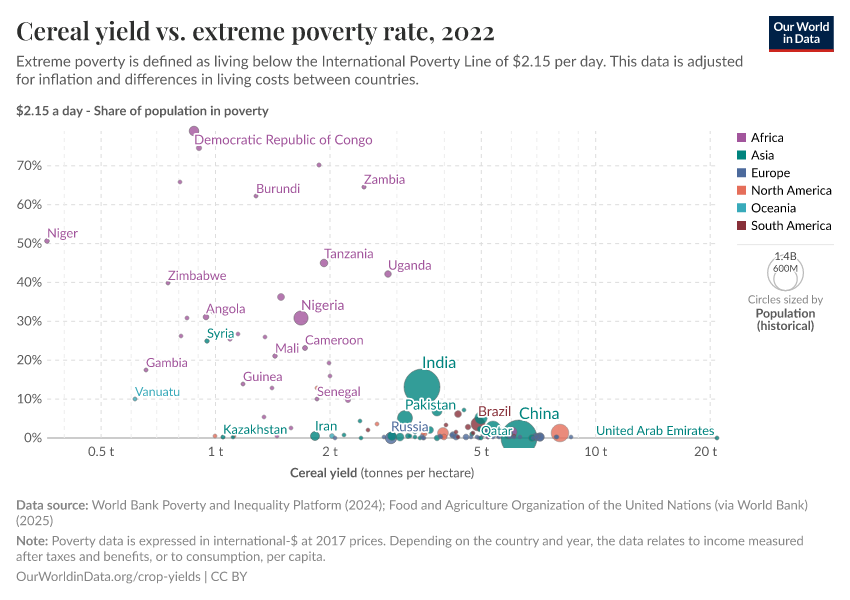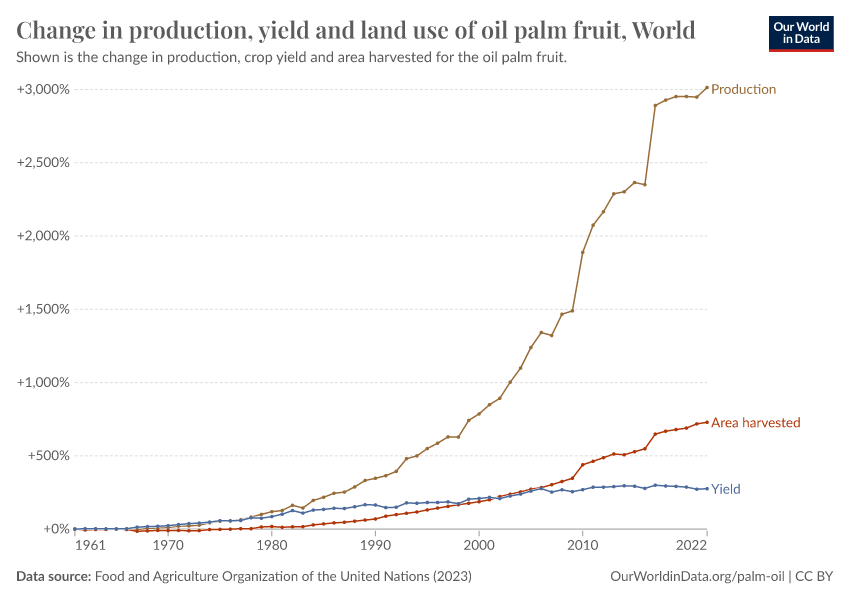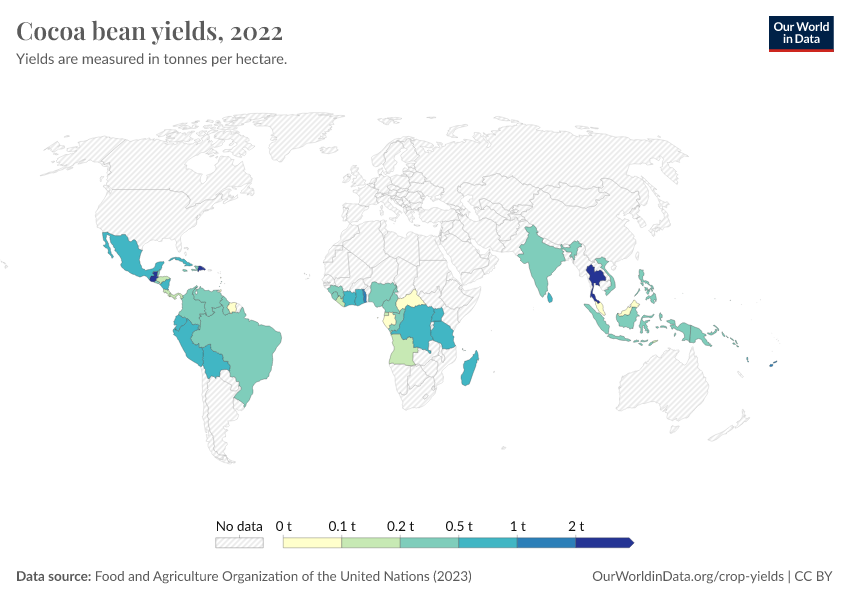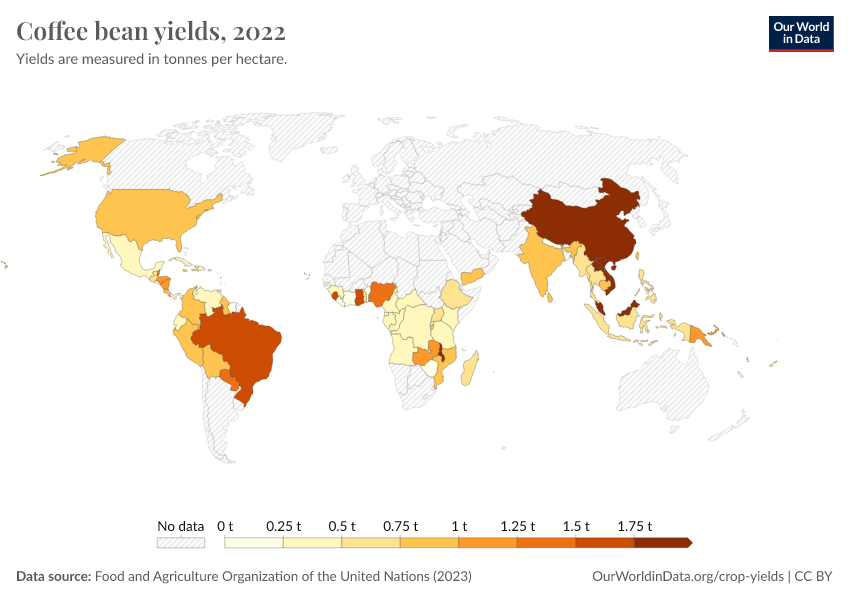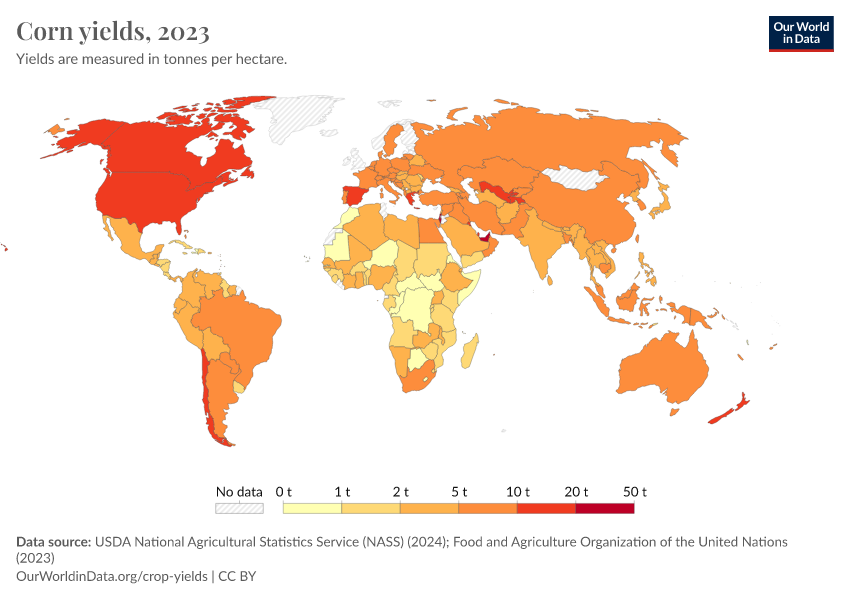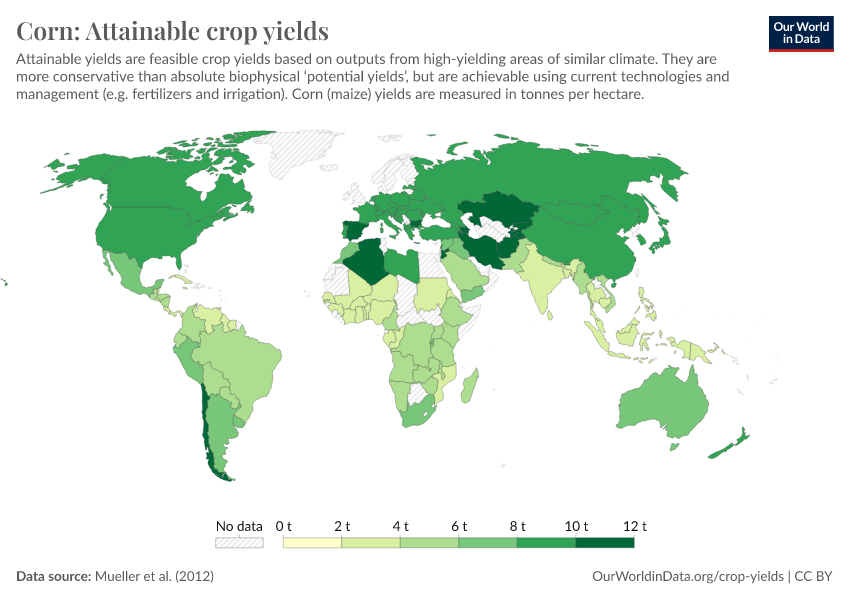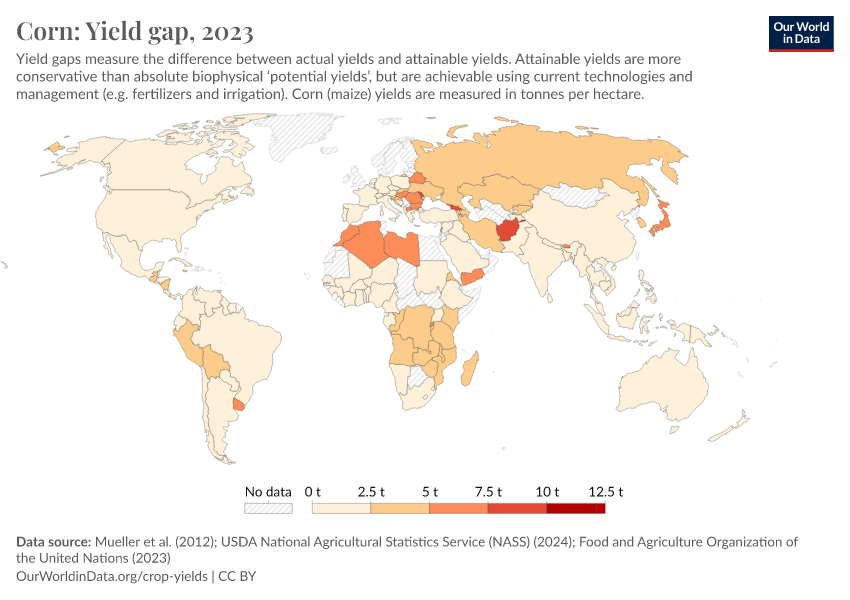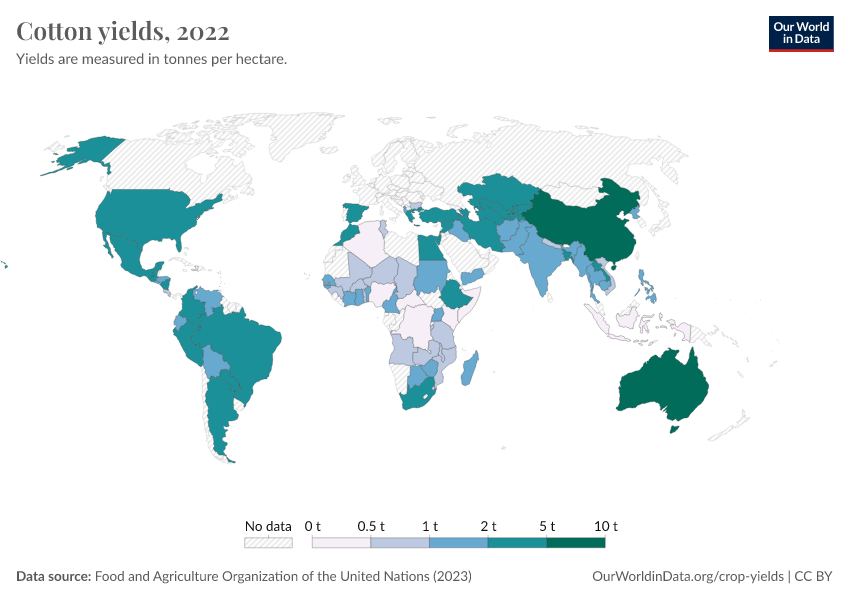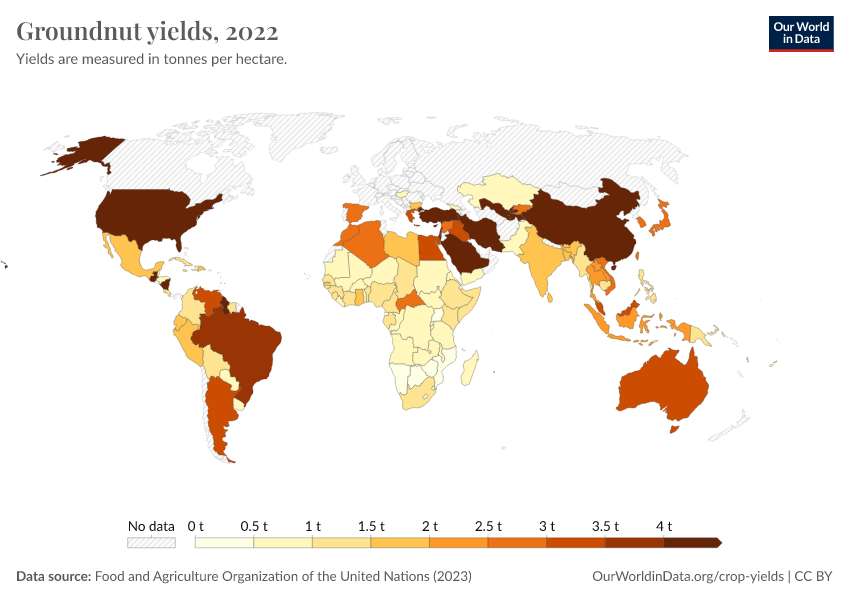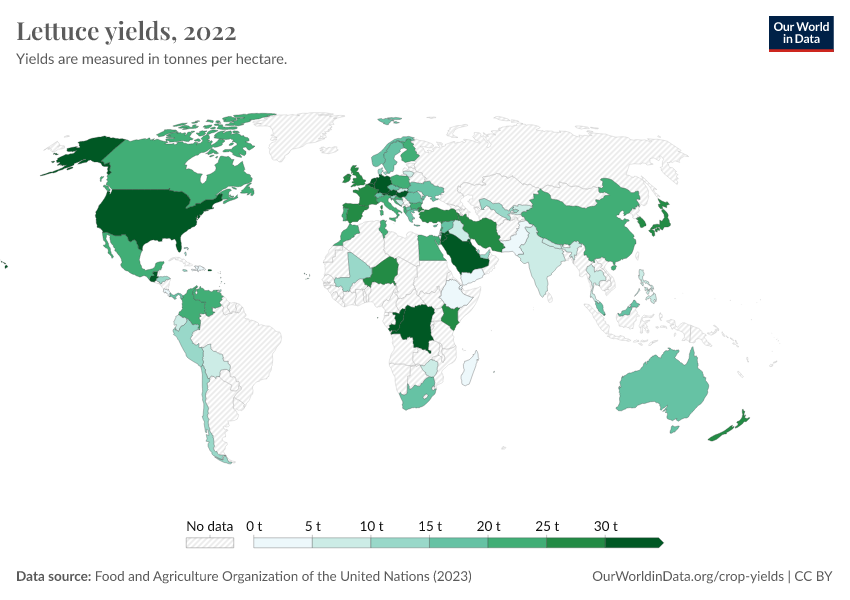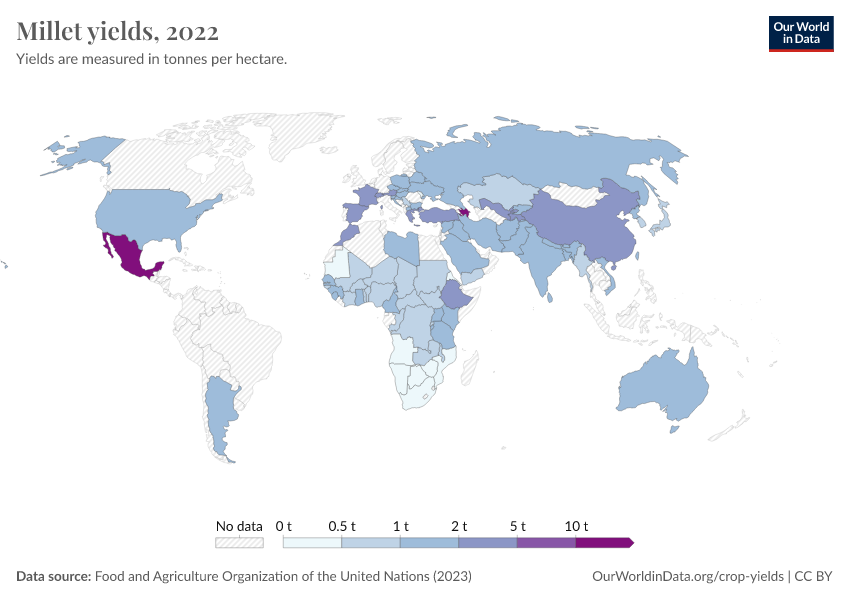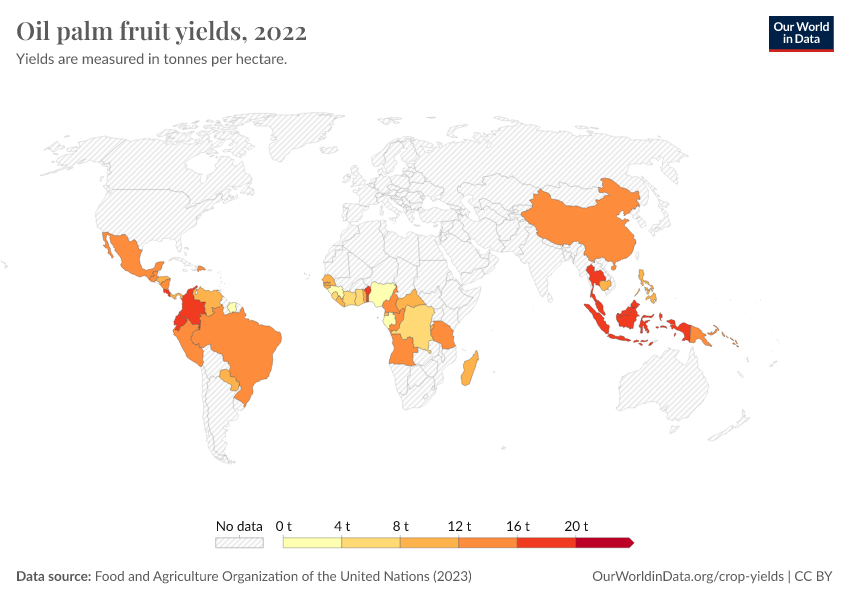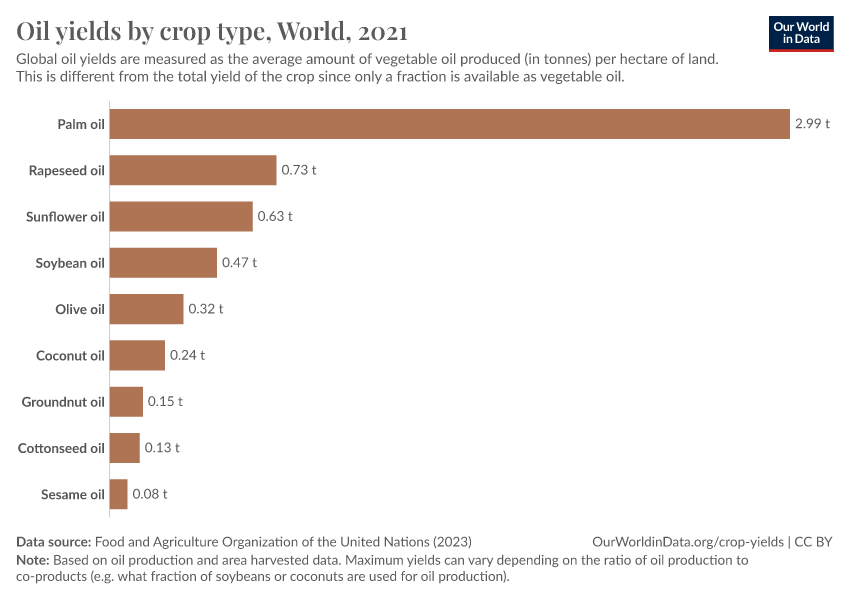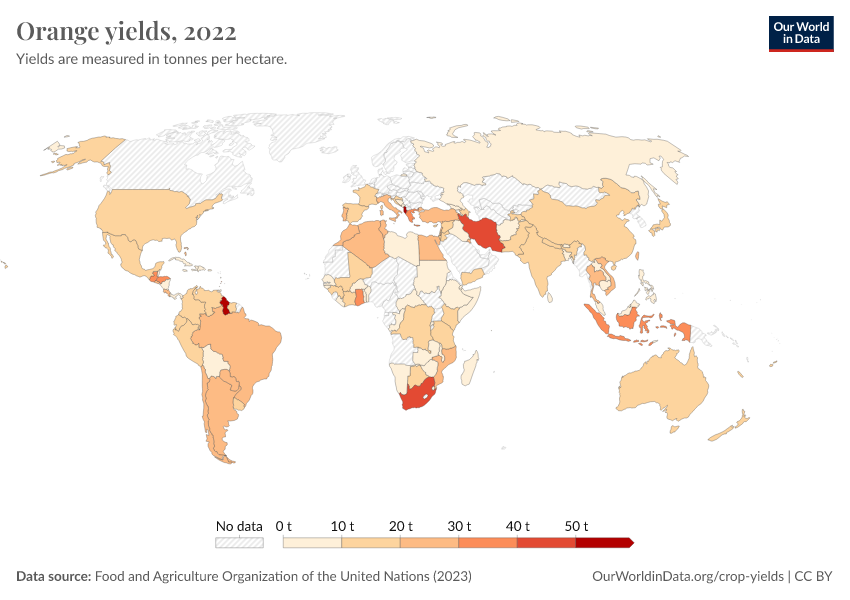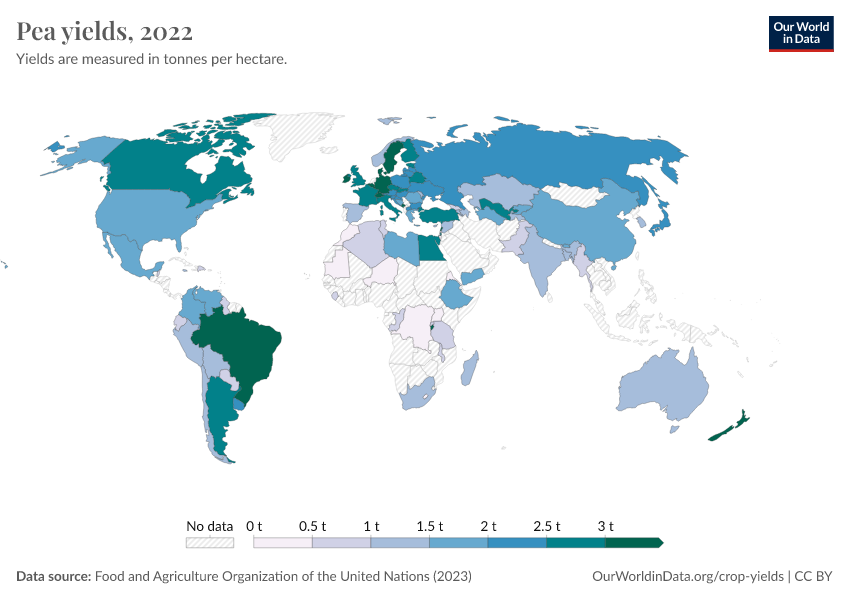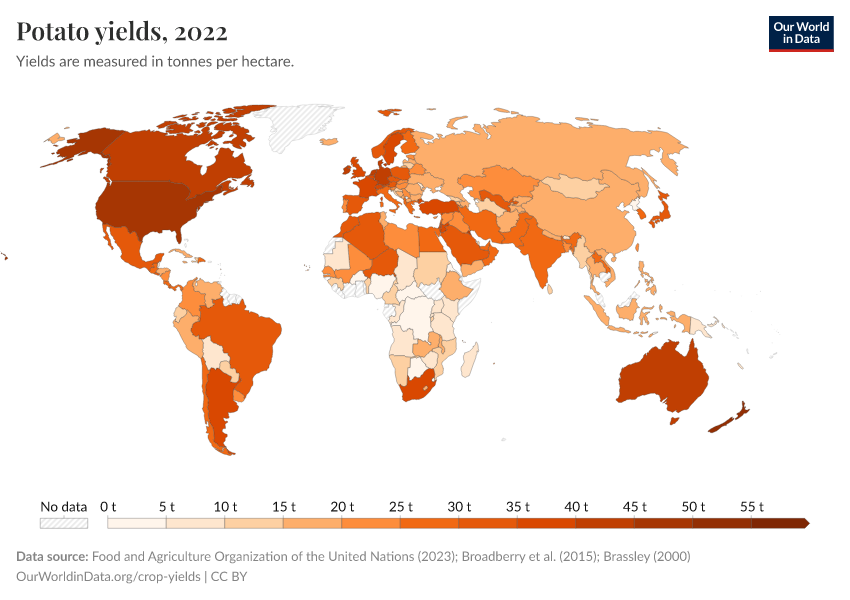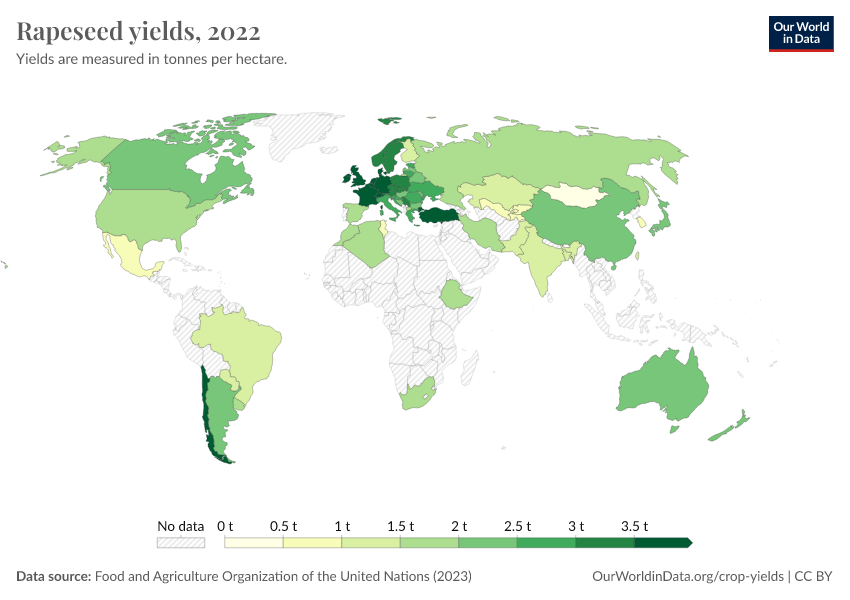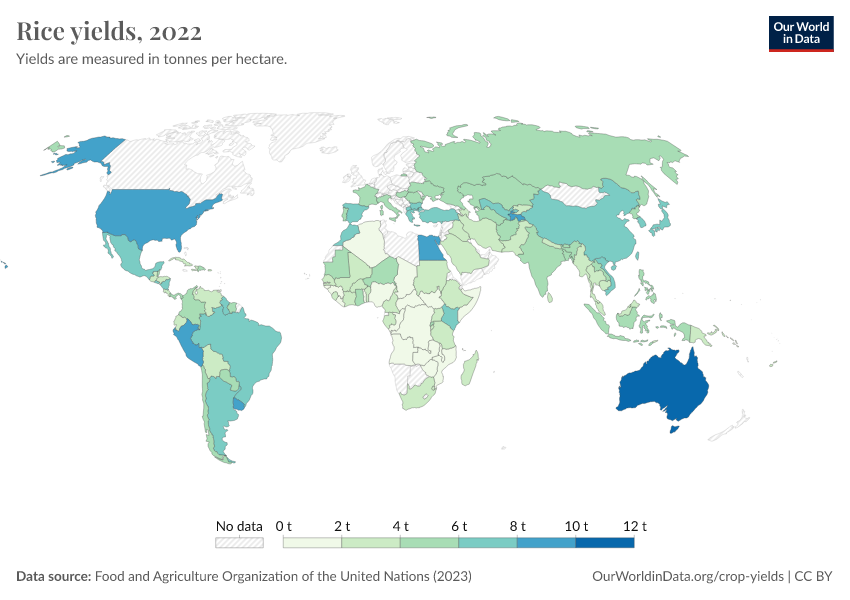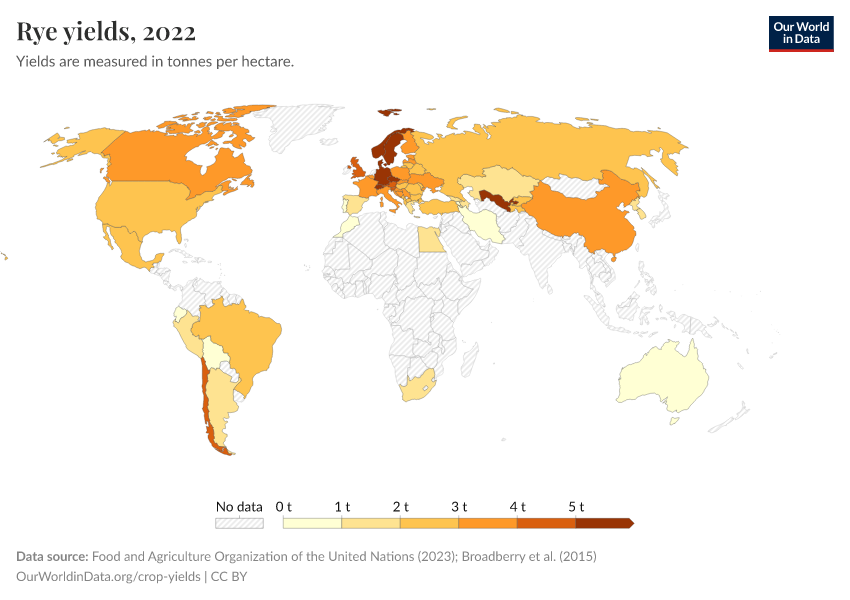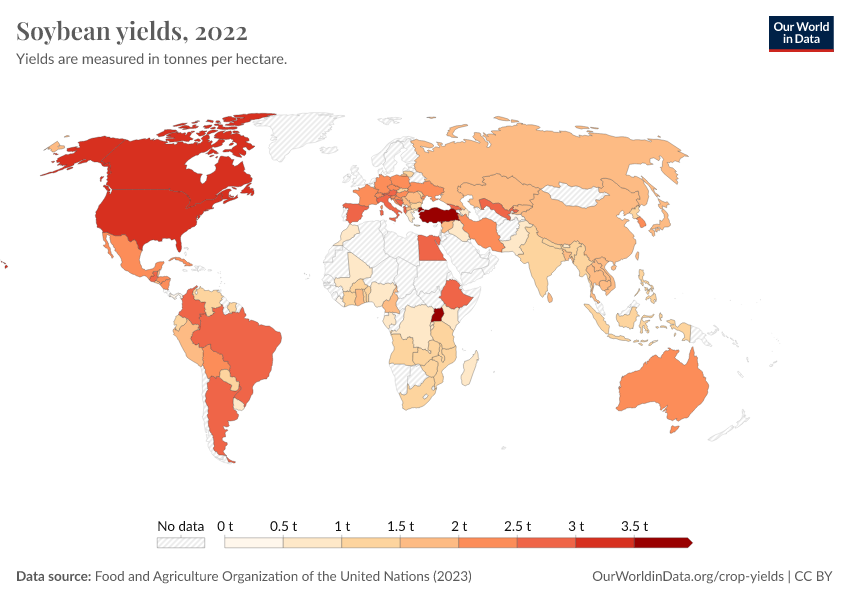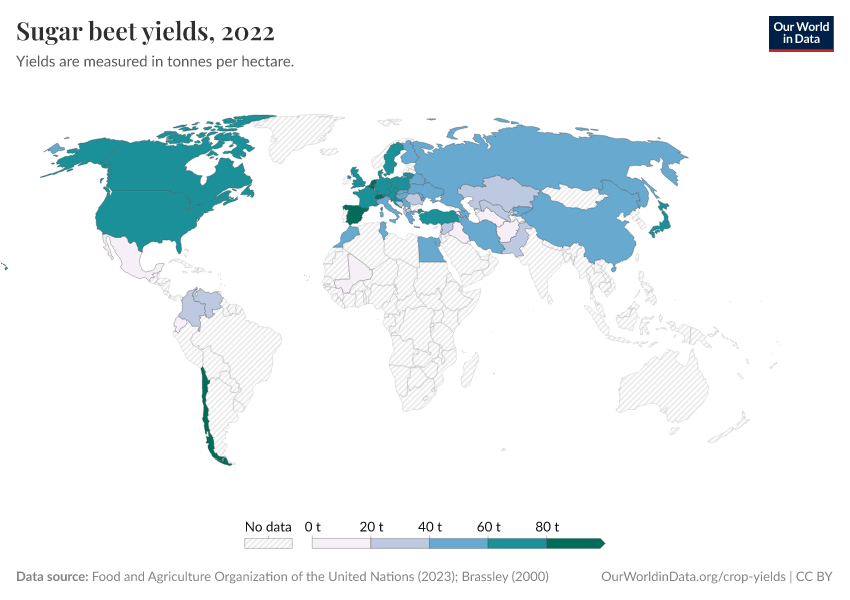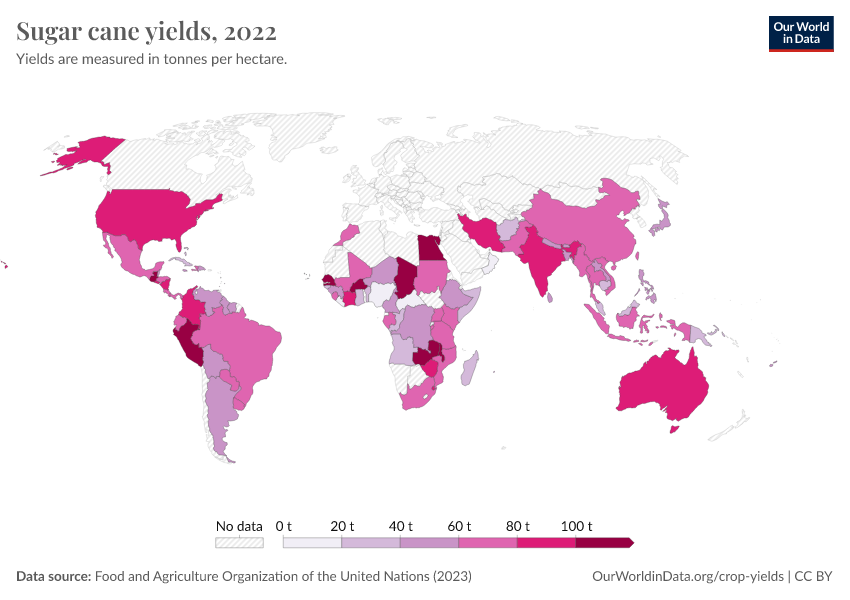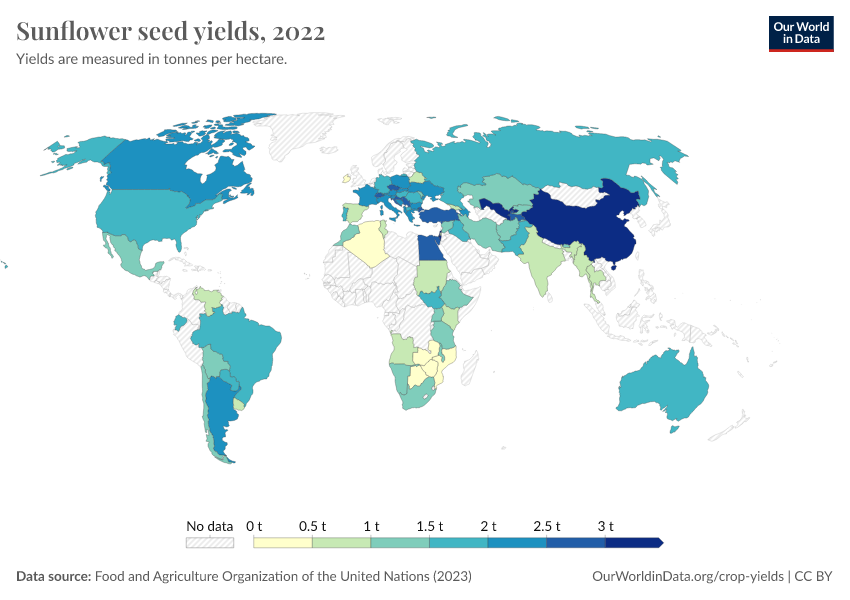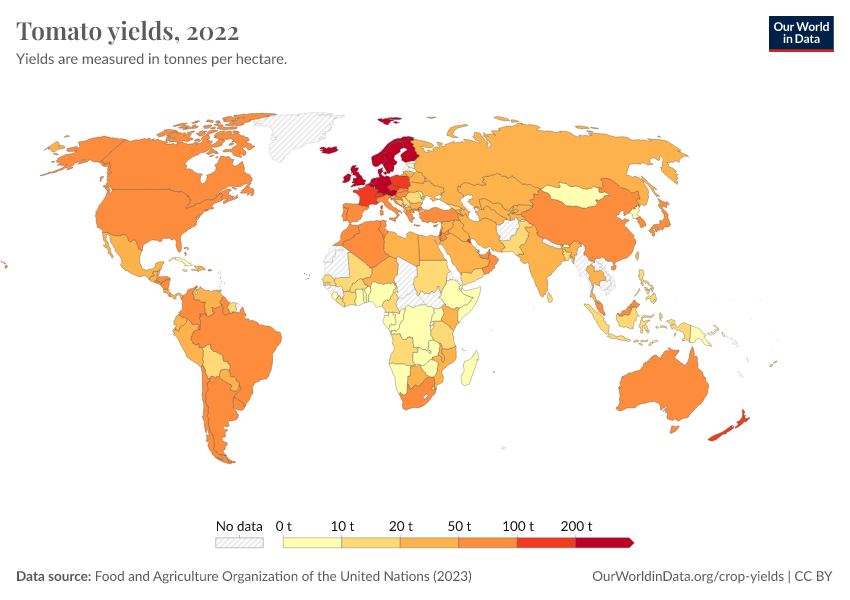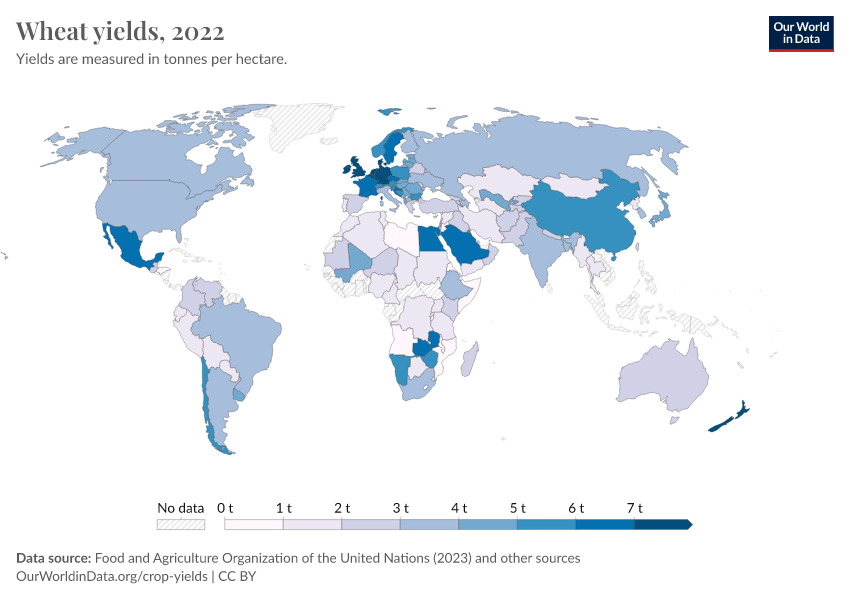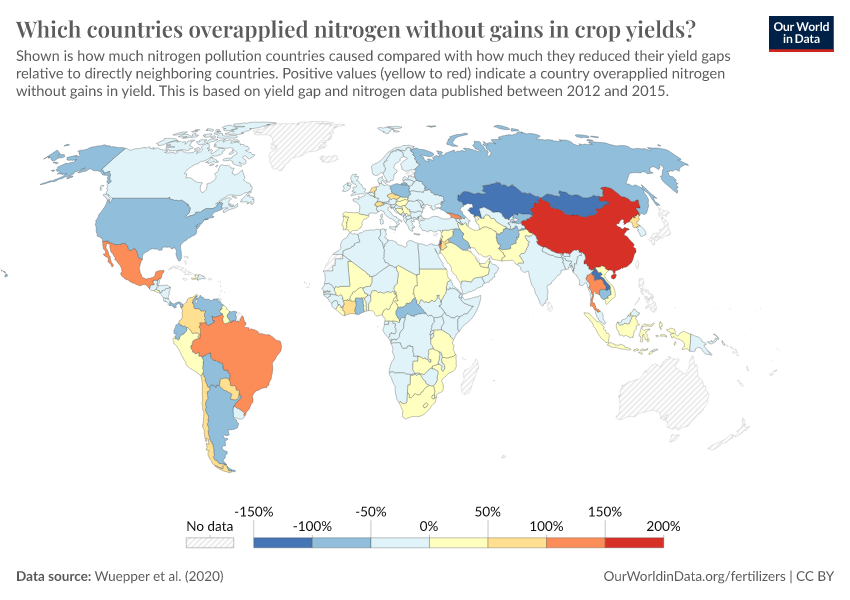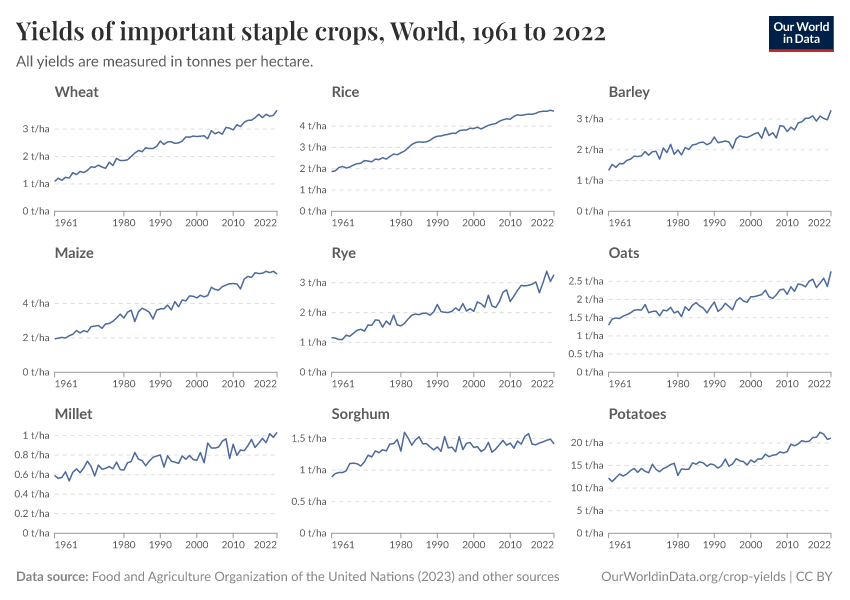Crop Yields
Increasing crop yields is crucial to improve food security, living standards, and reduce human impacts on the environment.
Improvements in crop yields have been essential to feed a growing population while reducing the environmental impact of food production at the same time. Increasing crop yields can reduce the amount of land we use for agriculture.
Crop yields might seem far from being one of the world's largest problems. But, if yields and labor productivity do not increase, it will have far-reaching consequences for global poverty and the protection of the environment. For people and the planet, it’s one of our most important problems to work on.
You can find all our data, visualizations, and writing relating to crop yields on this page.
Research & Writing
Increasing agricultural productivity across Sub-Saharan Africa is one of the most important problems this century
Agricultural productivity across Sub-Saharan Africa needs to improve to reduce hunger, poverty, and the destruction of biodiversity.
Do we only have 60 harvests left?
Claims that the world has only 100, 60, or even 30 years of harvests left often hit the headlines. These claims are overblown, but soil erosion is a problem and we can do something about it.
Key Charts on Crop Yields
See all charts on this topicCite this work
Our articles and data visualizations rely on work from many different people and organizations. When citing this topic page, please also cite the underlying data sources. This topic page can be cited as:
Hannah Ritchie, Pablo Rosado, and Max Roser (2022) - “Crop Yields” Published online at OurWorldinData.org. Retrieved from: 'https://ourworldindata.org/crop-yields' [Online Resource]BibTeX citation
@article{owid-crop-yields,
author = {Hannah Ritchie and Pablo Rosado and Max Roser},
title = {Crop Yields},
journal = {Our World in Data},
year = {2022},
note = {https://ourworldindata.org/crop-yields}
}Reuse this work freely
All visualizations, data, and code produced by Our World in Data are completely open access under the Creative Commons BY license. You have the permission to use, distribute, and reproduce these in any medium, provided the source and authors are credited.
The data produced by third parties and made available by Our World in Data is subject to the license terms from the original third-party authors. We will always indicate the original source of the data in our documentation, so you should always check the license of any such third-party data before use and redistribution.
All of our charts can be embedded in any site.
